The pickleball paddle market is saturated with new companies. Most of these newcomers aren’t typically worth mentioning because they just copy old ideas.
Ronbus is different. This new company is pushing a ton of innovation into the market while offering impressive paddles at affordable prices. Ronbus has been working closely with manufacturer TopCarbon to innovate on the thermoforming technology to create a paddle that blends performance and durability in a way that no other thermoformed paddle manufacturer has accomplished.
Ronbus’s initial paddle offerings – the R1/R2/R3.16 paddles- have been successful and are a breath of fresh air in the Gen. 1 raw carbon fiber paddle space. I love the R1.16, both for its performance and price. It plays similarly to my Joola Hyperion CFS but is more durable and far cheaper at $100 with a discount code. You can read my review of the Ronbus R1.16 here.
This post is about Ronbus’s newest cutting-edge offering – the Pulsar. It’s Ronbus’s entry into the Gen. 2 thermoformed paddle market. And, again, it’s not just a copy of other thermoformed paddles.
Contents
R3 Pulsar Technical Specifications
- Price:
$150($130 at Ronbus.com with discount code DASHPB) - Warranty: 6 months for defects
- Shape: Elongated
- Core thickness: 16mm
- Face: Raw Toray T700 carbon fiber w/ textured finish
- Average weight: 8.1 oz
- Grip length: 5.5”
- Swing Weight: 121
- Edge foam: Yes, throughout the entire perimeter of the paddle, incl. the handle
- Grip size: 4.125”
- Core: Honeycomb polymer
- Total length: 16.5”
- Width: 7.5″
R3 Pulsar Quick Summary
The R3 Pulsar is a Gen. 2 RCF (raw carbon fiber) paddle that’s built with unibody thermoforming, edge-foam injection, and a high-quality carbon fiber paddle face. Gen. 2 RCF paddles pack more power, pop, and spin than Gen. 1 offerings while still maintaining impressive control capabilities.
The R3 is one of two paddle shapes in the Pulsar line, the other being the R1 Pulsar. The R1 is a hybrid, curved-top design that’s similar to the Hyperion, Six Zero Black Diamond line, and Vatic Flash paddle shape, while the R3 is a more conventional elongated rectangular shaped paddle that’s similar in shape to the Legacy Pro, Vatic Pro V7, CRBN 1X, and soon-to-be-released Joola Perseus.
I’ve tested all of the new thermoformed paddles that have come out since late 2022, and the R3 Pulsar has been one of the most impressive. It has a little bit of everything and feels very good in hand. It’s well-balanced, has abundant spin and touch, and offers just the right amount of power. It’s one of only two thermoformed paddles on the market that features an elongated shape with a 5.5″ handle, the other being the CRBN 1X.
To me, the Pulsar feels like the perfectly balanced all-court thermoformed paddle. It’s the paddle I’d hoped to enter the Gen. 2. thermoform paddle space. It’s quickly become one of the main paddles I recommend for players looking to test out a Gen. 2 RCF paddle for the first time.
Feel
The first thing I noticed when picking up the R3 Pulsar was how balanced it felt. Now, I may have received one that’s weight is uniquely well distributed. My R3 Pulsar came in at 8.1 oz, while my other elongated thermoformed Vatic V7, CRBN 1X, and 2x Legacy paddles all came in at 8.4 oz or above. But I did add weight to my R3 Pulsar to get it up to 8.5 oz, and it still felt great.
The CRBN 1X 16mm feels the most similar in hand to the Ronbus R3 Pulsar, seeing as they share paddle dimensions and a 5.5″ grip. I certainly enjoy the longer grip compared to other thermoformed paddles that have 5.3″ grip lengths, though this is just personal preference.
The R3 Pulsar’s surface has more of a friction focus than grit focus, similar to the Legacy Pro. I’ve found that this type of surface performs better with spin.
When it comes to how the paddle feels when contacting the ball, the Pulsar certainly feels stiffer than a Gen. 1 non-thermoformed paddle, but it’s very plush and soft feeling for a thermoform. At the same time, it feels quite dense. It’s certainly a unique feel.
The 4.125-inch circumference handle feels excellent to me. It will likely feel narrow for those who prefer thicker handles, but adding one or more overgrips is always possible. I’m happy that Ronbus went with this circumference size, as I think it will appeal to most people and is easily modifiable for those who prefer a thicker handle.
Power
The R3 doesn’t pack as much effortless power as some other big-hitting thermo paddles, like the Six Zero Black Diamond, CRBN 1X, and Legacy Pro. But that doesn’t mean it’s lacking in power. The R3 Pulsar comes with plenty of power right out of the box. You can generate a similar amount of power as a Black Diamond by using a slightly bigger swing with the R3, and you’ll have to worry less about popping it up.
It’s definitely more powerful than any Gen. 1 paddle I’ve played with, including thinner 13/14 mm versions of those paddles. The R3 reminds of a lot of an extra powerful Ronbus R3 or Joola Hyperion, both of which are paddles that I’ve enjoyed a lot. I’ll be curious to play with the R1 Pulsar when I get my hands on it, as the R1 is shaped more similarly to the Hyperion CFS.
Based on raw power, the Double Black Diamond (DBD) might be the most comparable thermoformed paddle. It’s hard to tell which hits harder between the DBD and R3 Pulsar. The DBD is certainly more poppy. Either way, both paddles offer plenty of power as control-oriented thermos.
A benefit to the R3 Pulsar’s plush, less poppy type of power gives you more room to play around with lead tape. I’ve experimented with adding lead tape to the R3, and it really upped the plow-through power of the paddle.
Pop
The R3 Pulsar lacks a super-stiff face and is one of the less poppy thermoformed paddles available. This isn’t necessarily a bad thing. Thermos are already pretty stiff and powerful by standard paddle metrics, so having a ton of pop can make them hard to control. For example, I find the Six Zero Black Diamond one of the harder thermoformed paddles to use, and I attribute this mostly to the insane pop that it has.
With that said, you’re still getting more pop out of the R3 Pulsar than you would from most paddles. You can send laser-quick punch volleys and entirely dominate hand battles with the Pulsar. I catch a lot of people off guard with sneakily powerful and poppy drives straight up the middle or fast counter punches that they’re unable to react to quickly enough.
I’ve been hearing that the R1 Pulsar has more pop than the R3, and I hope to get a chance to experience both paddles soon for a side-by-side comparison.
Control
The R3 Pulsar has an excellent balance between power, pop, and control. The Pulsar and Double Black Diamond certainly feel like the most easily controlled thermoform paddles available. I actually find the plush Pulsar to be easier to control than the crisp-feeling DBD. The Pulsar feels overall less poppy and more consistent.
The Pulsar isn’t too stiff or too plush and has a large and forgiving sweet spot, which makes mishits rare. It has pretty amazing touch overall. I haven’t struggled with popping up balls at all with this paddle. I felt in control of my drops, dinks, blocks, and resets almost immediately with the Pulsar.
I believe this paddle may help some players who have been reluctant to play with thermoformed paddles feel more comfortable switching over.
If you’re coming from a soft, control-oriented Gen. 1 paddle, like the Hyperion CFS or Electrum Model E, then you’ll have to dial your shots in a bit before you feel entirely at home controlling the R3 Pulsar. But it will come quicker than most with other thermoforms, and your soft game shouldn’t really struggle much at any point in the process.
One interesting difference I’ve noticed with the R3 Pulsar compared to other thermoformed paddles is that it doesn’t seem to need a “break-in” period. Most thermoformed paddles feel like they need a week or two of playing to really settle into themselves and play at their best. On the other hand, the Pulsar’s performance hasn’t changed. It feels the same after a few weeks of hard play as it did when I first played with it. More on why this might be in the durability section.
Maneuverability/hand speed
Because the R3 is 16mm with an elongated face, it won’t feel the fastest compared to hybrid-shaped or thinner paddles. It has a swing weight of 121, similar to other elongated paddles, such as the CRBN 1X, Legacy Pro, Vatic V7, and Diadem Warrior Edge.
It certainly doesn’t feel heavy or clunky, though. I find that the Pulsar feels more maneuverable than my Legacy Pro, CRBN 1X, and Vatic V7 paddles, even when it’s weighted up to the same weight as those. It feels much easier to swing than my Hyperion CFS and Warrior.
While not the lightest or quickest, the R3 still feels plenty quick at the kitchen line. My hand speed hasn’t been hurt at all with the paddle, and the elongated reach and longer handle that the R3 has make its higher swing weight well worth it.
If you want a faster paddle, then the R1 Pulsar, with its hybrid shape and option, will provide you with the quickness you need. The R1 Pulsar comes with a 5.5″ inch handle like the R3 Pulsar, as well as a shorter 5.25″ handle, which is very fast in hand.
Spin
Just like the original Ronbus R3, the Pulsar has top-tier spin, resulting in it landing high up on my list of best paddles for spin. You should be pleasantly surprised with how much curve you’ll get putting spin on the ball with the Pulsar.
In my experience, the R3’s spin is up there with the Legacy Pro, and definitely higher than the Double Black Diamond and CRBN 1X. This is impressive because all of these paddles are among the highest-spinning paddles on the market.
With the Pulsar, my topspin serve kicks way higher than with most other paddles I’ve been testing. I’ve been leveling my topspin drives, drops, and dinks with huge success with my Pulsar, which has been super fun (for me at least, not so much for the competition).
Durability
The topic of durability has recently been huge in the pickleball paddle world, especially concerning Gen. 2 thermoformed paddles. The threat of delamination, disbonding, and core crush is real.
Fortunately for the Pulsar, Ronbus is very intentional with its manufacturing processes and has been hyper-focused on preventing durability issues from occurring in its thermoformed paddle line. Ronbus works with the paddle producer TopCarbon, and they’ve co-innovated through a lot of trial and error to reach the current state that the Pulsar is at.
While Pulsar is still new to the market, its production methods have so far proven successful. Ronbus does extensive stress testing with machines to ensure this, and I haven’t heard about any Pulsars facing durability issues out in the wild so far.
I can easily tell that Ronbus is doing things differently because the Pulsar doesn’t have a “break-in period” like other thermoformed paddles do. I believe that this is an intentional manufacturing difference with the Pulsar; maybe the use of cold molding instead of hot molding plays a role. No matter how they did it, I believe that this focus on play consistency is intentional and part of their goal to reduce the risk of delamination, disbonding, and core crush.
Delam/core-related issues aside, the Pulsar is built like a tank. The unibody thermoforming process means that the paddle isn’t vulnerable to snapping or edge-guard failure. The premium Toray raw carbon fiber Ronbus uses for the paddle face is known to hold up well.
I haven’t personally noticed any wear or drop in spin performance with my R3, or experienced any other issues, but will update this post if I do.
Value
Ronbus sells the R3 Pulsar for $150 ($130 at Ronbus.com with discount code DASHPB). This is a great deal for an innovative paddle that uses high-quality materials and processes. By comparison, the CRBN 1X, which is a similar paddle, costs $220 and suffers from more durability issues. The Joola Perseus, another similar thermoformed paddle, sells for $250.
Ronbus is also a company worth supporting and rooting for. Dong, the owner of the company, is pursuing the paddle-making business in his retirement and is truly passionate about innovative paddle production methods. His small company is doing fantastic things in the space, and it goes a long way to support him with a purchase. Ronbus also has a longer warranty than some other comparable companies.
Should you buy the Ronbus R3 Pulsar?
Within a niche of its own, the Pulsar is a great addition to the thermoformed paddle market and has my recommendation as one of the best paddles worth purchasing. It feels like a steal at $130 with code DASHPB (it was priced at $170 prior to the release of the R1 Nova and R3 Nova paddles).
You should buy the R3 Pulsar if you want an elongated, long-handled thermoformed paddle with top-tier spin, plenty of power, and excellent control for a Gen. 2 raw carbon fiber. If you’re new to thermoformed paddles or want to collect the best, then the R3 Pulsar is calling your name.
Some people may worry that it lacks power compared to some other paddles. But honestly, I feel that concern is a bit overblown. I drive some seriously hard balls with this paddle with better accuracy and consistency than my more powerful paddles.
I’ve loved my time with the R3 Pulsar and use it as my primary paddle. It’s consistent, does an excellent job of balancing power and control, and has a ton of spin to mess with your opponents. It also has a 5.5″ handle, which I love.
It’s also worth checking out my review of the R1 Pulsar if you have any interest in a hybrid-shaped version of this paddle. It also comes in two handle lengths, which the R3 Pulsar does not. I’d love to see a 14mm R3 Pulsar someday, but Ronbus has said they’re sticking with 16mm right now due to limited resources and many new projects already in the pipeline.
If you think thermoforming isn’t for you, then the original Gen 1. Ronbus R1.16 might be the perfect choice for your game. It’s less powerful but is cheaper and easier to control than the Pulsar.
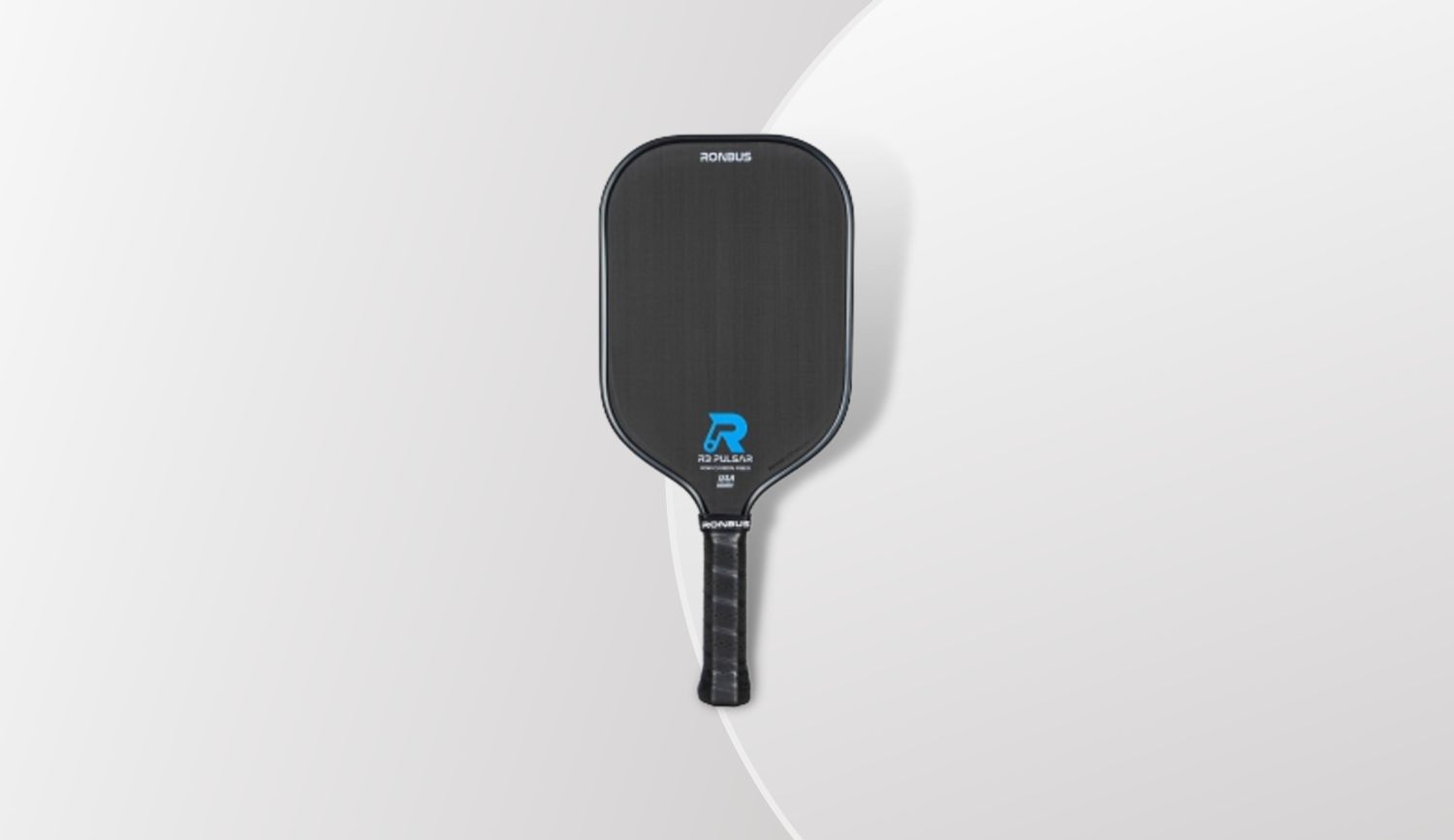
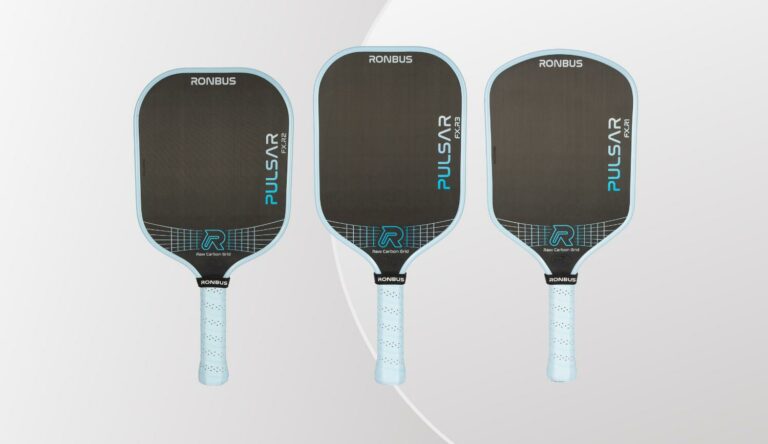
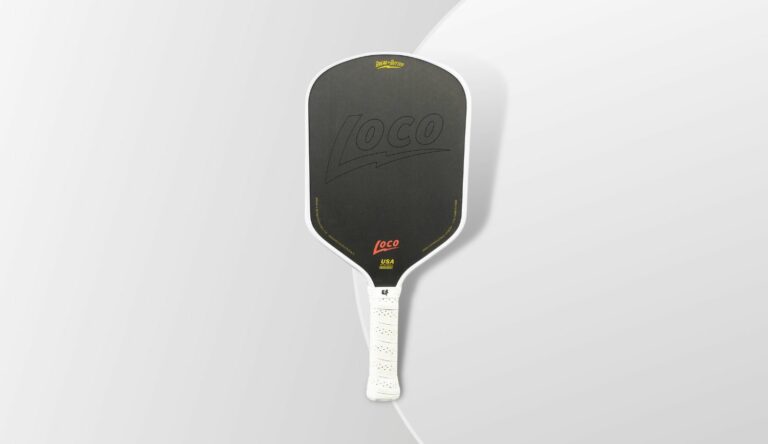

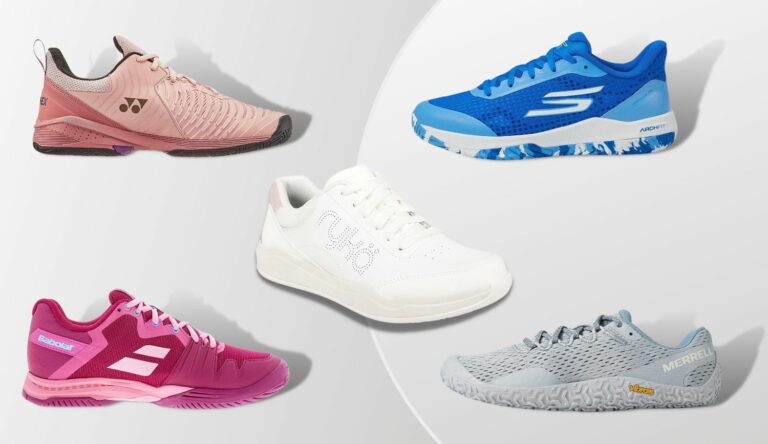
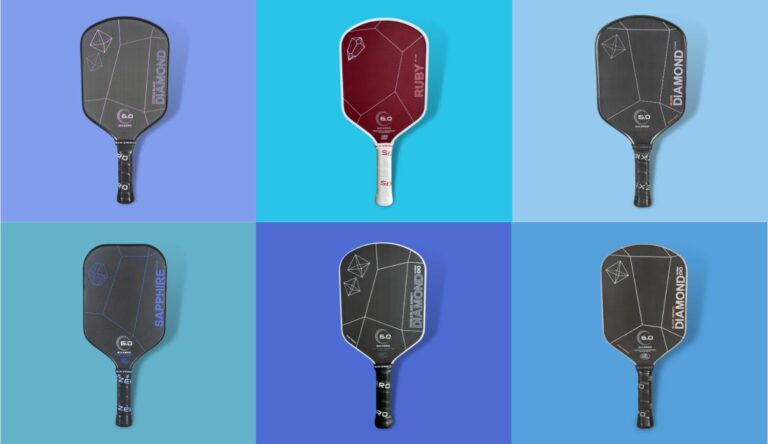

8 thoughts on “Ronbus R3 Pulsar Paddle Review (Power, Spin, Control, Feel)”
ISsthe R3 Pulsar Approved for tournament play?
Yes, the R3 and R1 Pulsars are approved.
this paddle make your top 5 list for intermediate players?
Absolutely. I will be updating the list to include it.
I see you favor the Pulsar and the Legacy Pro as your main paddles the last few weeks. Is that still the case and which is your most favorite of the two now and why?
Hey, Joe. The R3 Pulsar is still my number one paddle choice. I’ve actually been favoring the V7 Prism lately, too. It has that great “Gen 1.5” power/control combo. But I always come back to the Pulsar, as it has the best combo of the two for me. I still enjoy playing with my Legacy Pro, but haven’t been using it as much lately.
I’m working on a big spinner “curve” bounce-serve that’s pretty effective now with the Diadem Icon V2…
Plenty of power (depth) and coming-at-you R-L swerve… but looking to buy a paddle with Spin most important… R3 Pulsar?
Thanks !!!!
Hey Tom. Pulsar has top-tier spin, for sure. You’ll get more out of it than your with your Icon.